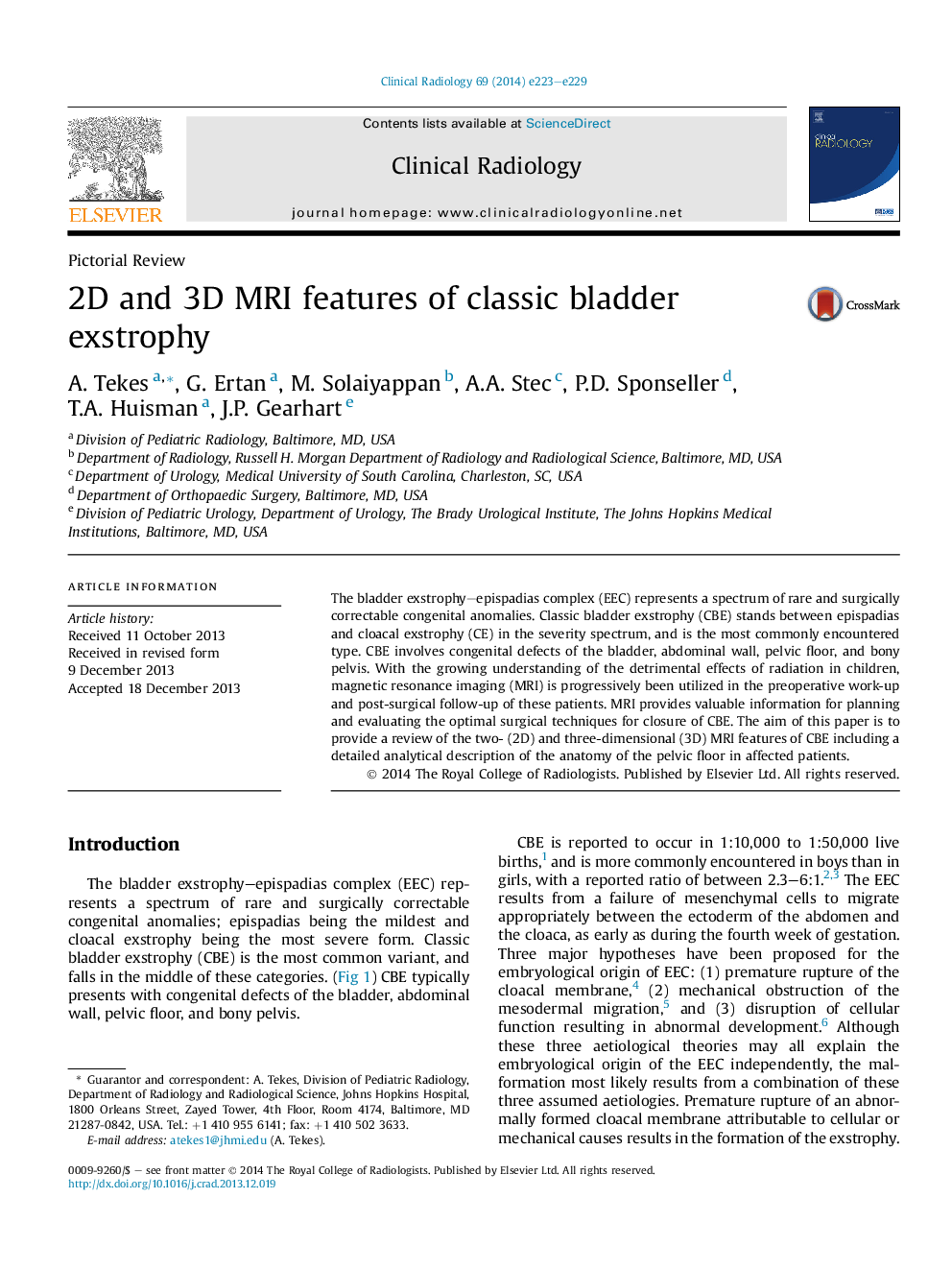| Article ID | Journal | Published Year | Pages | File Type |
|---|---|---|---|---|
| 3982353 | Clinical Radiology | 2014 | 7 Pages |
The bladder exstrophy–epispadias complex (EEC) represents a spectrum of rare and surgically correctable congenital anomalies. Classic bladder exstrophy (CBE) stands between epispadias and cloacal exstrophy (CE) in the severity spectrum, and is the most commonly encountered type. CBE involves congenital defects of the bladder, abdominal wall, pelvic floor, and bony pelvis. With the growing understanding of the detrimental effects of radiation in children, magnetic resonance imaging (MRI) is progressively been utilized in the preoperative work-up and post-surgical follow-up of these patients. MRI provides valuable information for planning and evaluating the optimal surgical techniques for closure of CBE. The aim of this paper is to provide a review of the two- (2D) and three-dimensional (3D) MRI features of CBE including a detailed analytical description of the anatomy of the pelvic floor in affected patients.
